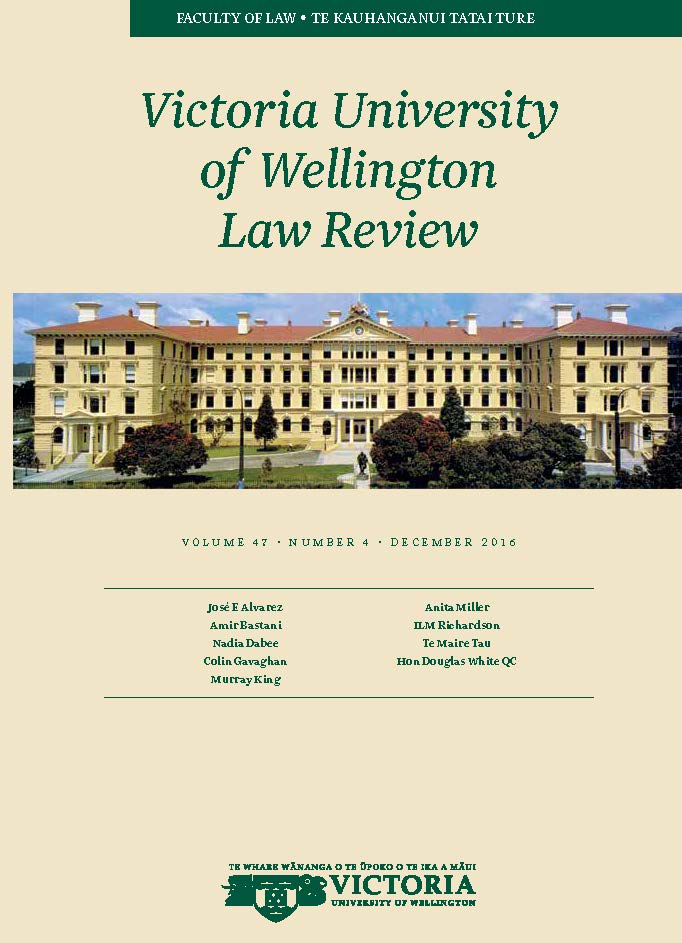The Health and Safety at Work Act 2015: the Myth of Increased Deterrence
DOI:
https://doi.org/10.26686/vuwlr.v47i4.4787Abstract
An assumption frequently made about the Health and Safety at Work Act 2015 is that the imposition of more responsibility on businesses and officers and higher criminal penalties will increase the deterrence of workplace accidents. This article argues that the anticipated increase in deterrence is a myth. In the new Act the definitions of duty-holders and their duties are broad and flexible. In theory, in the face of this broadness and flexibility, businesses who are risk-averse will over-comply with safety regulations to ensure they do not face a penalty. The new law appears to increase penalties and impose higher obligations on a greater number of duty-holders. However, in reality, the standard of care on employers remains unchanged, as do the enforcement mechanisms. Thus, in practice, the incentives to under-comply are higher than the incentives to over-comply and deterrence is unlikely to increase.
Downloads
Downloads
Published
How to Cite
Issue
Section
License
Authors retain copyright in their work published in the Victoria University of Wellington Law Review.


